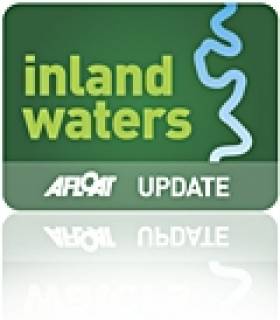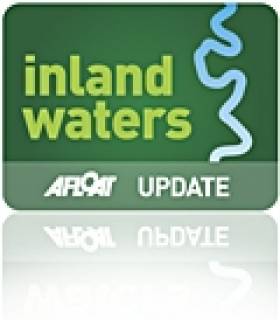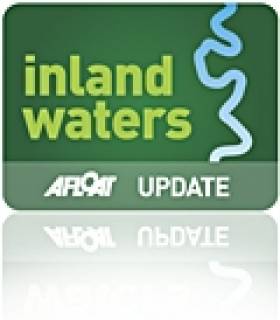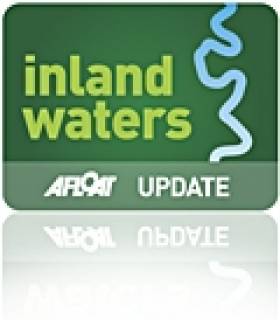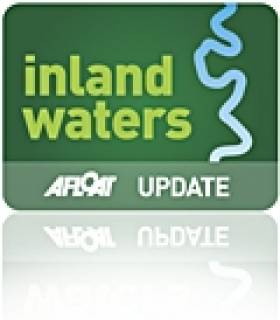Displaying items by tag: inland waterways
New Mobile Guide to Lough Derg Trails
#INLAND WATERWAYS - A new mobile app that guides visitors around the trails of Lough Derg has gone live, the Clare Champion reports.
More than 20 trails are included in the app, from walking to cycling, driving, cruising and canoeing.
The app - developed in partnership between Shannon Development and US firm EveryTrail - uses Google Maps and the GPS system in smartphones to pinpoint trails near the user's location.
Users can download route descriptions, images and notes, get directions to the starting point and follow the the pre-plotted course.
The Lough Derg Trails app is available for iPhone and Android devices.
The Clare Champion has more on the story HERE.
#INLAND WATERWAYS - Inland Fisheries Ireland (IFI) has announced the results of studies on the genetic makeup of brown trout stocks in the Suir and Boyne river catchments.
These studies form part of a wider scheme looking at Ireland's larger riverine catchments - assisted by the Office of Public Works, geneticists from UCD and trout anglers across Ireland - and involve a chemical analysis of scale samples from fish known as 'micro-satellite DNA analysis'.
The results from the Suir and Boyne are described by IFI as "quite amazing" and "of significant value" to managing the fisheries in these areas.
In both catchments, the first step saw trout stock samples of young fish examined genetically, and they were shown to be discrete - in other words, fish from any given tributary were found to be genetically different to those from others.
The next step involved samples of adult fish from the main river, contributed by anglers, which were then related to the different tributary genetic types.
Summary results from the Suir and Boyne show that there are respectively seven and five distinct families of trout in the catchment area; that most fish born in tributaries migrate to the main stem till adulthood before returning to their tributaries to spawn; that numbers migrating from individual tributaries are variable, but fish don't cross into adjacent catchment areas; and that there movement of young trout along the river system is "extraordinary", with fish often migrating from near the source to the mouth.
More details on findings for the Suir catchment and Boyne catchment are available on the IFI website.
Waterways Ireland Launch Marketing Strategy
#WATERWAYS IRELAND – The Waterways Ireland Marketing Strategy 2012-2017 has been launched by Minister Carál Ní Chuilín MLA, Minister Jonathon Bell MLA , and Minister Dinny McGinley, T.D. in Waterways Ireland's Enniskillen Headquarters.
Waterways Ireland has a legislative requirement to engage in promotion, including marketing & development of the tourism and commercial potential of the inland waterways for which it is responsible.
In this context from the outset Waterways Ireland recognised that in order to enhance and develop the potential of the waterways, a solid platform for sustained market development was required. The previous strategy was put in place in 2007.
The 2012-2017 Waterways Ireland Marketing Strategy builds on the progress of the previous strategy and prescribes strategic objectives for the future of the organisation. Marketing programmes have also been developed covering the remit of communications, product development, visitor services, promotions, branding and research.
Speaking about the strategy Director of Marketing & Communications Martin Dennany confirmed "Marketing the inland waterways has brought increased dividends for both the communities and businesses along the waterway corridors. The 2012-2017 Marketing Strategy will build on the foundation established and continue to bring a focus on the wonderful resource that is the waterways. We will continue to work in partnership with our colleagues in Northern Ireland Tourist Board, Fáilte Ireland and Tourism Ireland on the delivery of the tourism aspects of our programmes"
Amateur Photo Contest Celebrates Shannon's Biodiversity
#LIFE ON THE SHANNON - MulkearLIFE has launched its amateur photo competition for 2012, with a prize fund of €1,000 on offer.
The contest celebrates the 20th anniversary of the EU LIFE programme and has the theme of ‘Exploring the Biodiversity of the Lower Shannon’. Images may cover any aspect of the theme, and can be submitted in any style from macro to landscape, black and white or colour.
There is no end to what type of image can be submitted. It could be an image of water, trees, plants, fish, invertebrates, fungi, mammals, birds, lichen, domestic animals - basically any living organism.
Though not essential, images that portray biodiversity in and along rivers, streams and waterways throughout the Lower Shannon region would be preferred.
Entry is free, and entrants can submit up to three images. Prizes will be offered in two categories: Children/Young Adults and Adults.
In addition, the overall winner will receive one full day's training in wildlife and landscape photography from a leading wildlife photographer later in 2012.
Full details of how to enter the competition are available on the MulkearLIFE website HERE. The closing date is 1 May 2012 at 5pm.
Bridge Report Could Herald New Corrib Crossing for Galway
#RIVER CORRIB - A consultant’s report on Wolfe Tone Bridge in Galway could clear the way for a new crossing of the River Corrib, according to The Connacht Sentinel.
Galway City Council has confirmed that the €400,000 report will look at the possibility of a new bridge for vehicular traffic downstream of the existing span.
“Given the age of the current structure, we have to look at plans for the construction of a new bridge and the retention of the existing crossing as part of a walkway over the Corrib," said the council's director of services Ciarán Hayes.
“There is no doubt that such a walkway, as part as an overall regeneration plan for the area, would be a most welcome addition to the amenity infrastructure of this historic part of the city."
The €400,000 allocation for the report commission will comes from the National Roads Authority and Department of the Environment budget for regional and local roads in 2012. The report is expected to be carried out later this year.
Waterways Ireland Public Consultation on Safeguarding Vulnerable Groups
#INLAND WATERWAYS - Waterways Ireland is currently undertaking two new public consultations on improving safety standards for children, the elderly and people with disabilities on our inland waterways.
Details for the consultation exercise on Safeguarding Vulnerable Groups Policy & Procedures and the Draft Disability Action Plan 2011-2013 are available from the Waterways Ireland website.
Comments may be submitted via e-mail to [email protected] or by post to Waterways Ireland, Strategy & Policy Section, 2 Sligo Road, Enniskillen, Co Fermanagh BT74 7JY.
The closing date for comments is Tuesday 21 February 2012.
New Tug for Shannon-Erne Waterway
#INLAND WATERWAYS - Waterways Ireland has taken delivery of its third tug boat from Mooney Boats of Killybegs.
Designed by Marine Design International, the Inish Fendra is an 11.2-metre LOA steel-built tug which has been specifically tailored for operation on the Shannon-Erne waterway system.
Its design bears many similarities to the Inis Muillin, which was delivered by Mooney Boats in 2010.
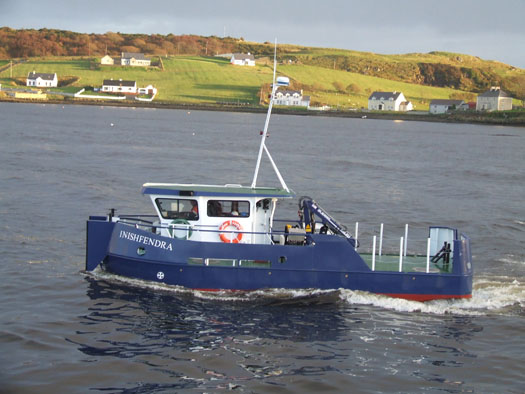
The new tug, Inisfendra built by Mooney Boats of Donegal
According to Maritime Journal, the design process "involved significant input from the vessel operators and managers combined with the latest technology and ideas from the designers and builders to improve on efficiency" and safety.
A key feature of the Inish Fendra is its 3,500-litre ballast tank and pumping system, which is operated by the push of a button and can reduce the vessel's air draft by 0.2m.
Maritime Journal has much more on the Inish Fendra HERE.
Bidding Begins for Shannon Harbour Houseboat Berths
#SHANNON - Waterways Ireland has just released details of its scheme for renting berths for houseboats on the Grand Canal at Shannon Harbour.
Under the scheme, boaters can rent one of eight fully-serviced berths for their houseboat on a 12-month extended term licence running from 15 March 2012 to 14 March 2013.
Amenities on-site include electricity supply, access to pumps and clean water, shower facilities and limited car parking. Pre-paid smart cards are required to utilise some facilities.
As space is limited, the berths will go to the highest bidders, with the minimum acceptable bid set at €1,250 (a security deposit of €250 is required).
It is expected that licence holders will live on board their vessels as their main residence. Winning bidders are also expected to arrange their own refuse collection from the site.
The closing date for bids is 23 February 2012. The Waterways Ireland website has the application form plus more information about the scheme and details of the licence agreement.
Fast flow at Portora, Enniskillen
#Erne – As a result of fast river flow On the Erne system at Enniskillen, Portora Lock is presently closed. Also, a defective sluice gate on the weir means there are fast flow rates in the vicinity of the lock. Waterways Ireland has issued a warning to Masters to proceed with caution if navigating in the vicinity of the lock.
Moored on the Erne? 48–Hour Rule Now in Force
#ERNE – Boats owners using public moorings on the river Erne in excess of two days are liable to prosecution according to a Waterways Ireland notice issued today. The authority advises masters and owners of vessels and boats on the Erne Navigation that procedures to initiate prosecutions for contravention of Bye-law 19 of Lough Erne (Navigation) are now in place. The bye-law states "No master or owner shall permit a vessel or boat to remain moored at or in the vicinity of any public mooring for a continuous period in excess of 48 hours save that a new period of 48 hours shall be deemed to commence following an absence from the mooring for a period of four hours or more".


























